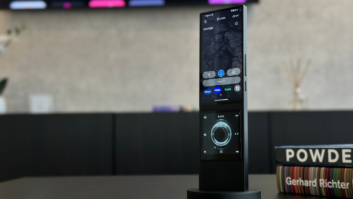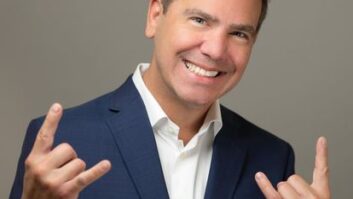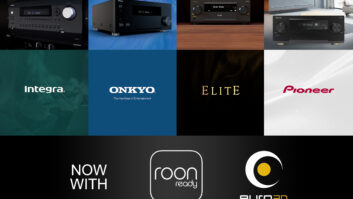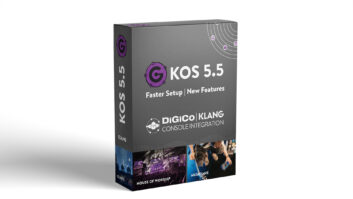New York — Next year will be the breakout year for Onkyo USA, which will take a “major step forward in product and marketing to consumers,” Gibson Brands chairman/CEO Henry Juszkiewicz told TWICE.
The breakout year for TEAC America’s consumer audio business will be further down the road because Gibson became majority owner of parent TEAC Corp. in Japan only last month, he said. In the meantime, however, TEAC will become more profitable and increase its growth rate, he promised.
Although Gibson is finding worldwide opportunities to cut costs by, for example, merging TEAC, Onkyo and Gibson warehouses in Europe, both brands will spend more on marketing and product development “in the short and long term,” he said.
Privately held Gibson purchased 51 percent of Onkyo USA from Japan-based Onkyo in early 2012, when it also became Onkyo Japan’s second largest shareholder by buying about 15 percent of the company’s shares. In May, Gibson closed on its purchase of a 54.4 percent stake in Japan’s TEAC, which offers consumer and pro audio, broadcast and medical equipment, in-flight entertainment systems and recordable optical discs.
Gibson makes musical instruments as well as pro audio equipment and ventured into consumer audio for the first time with its Onkyo stake and an earlier acquisition of Cerwin-Vega.
“Neither Onkyo nor TEAC are broken,” Juszkiewicz said during an interview in New York City’s Hit Factory music studios. “While they are not the most profitable companies in the world, they are profitable” and enjoy “excellent management and passionate employees,” he said. As a result, Gibson does not need to “break and fix” the companies but instead make “evolutionary changes.”
Both companies, he said, are strong innovators in engineering “but don’t seem to want to bring them [their innovations] to market. They can do great stuff in the lab.”
Onkyo is investing more in product development and in the next 12 to 18 months, the “fruit of those aggressive R&D developments will come out,” he said. “We might be able to demonstrate some of this in January.”
The next generation of Onkyo products will not deliver “incremental” improvements but will be “different, more contemporary,” he promised.
Juszkiewicz declined to say whether Onkyo will enter new product categories next year, but if and when it does, it will do so with the intent of “having a good shot at dominating” the category and becoming a “category champion.” That effort, he said, “takes more time” than “just looking to get a piece of the pie,” as so many Japanese electronics brands are content to do, he said.
It took years, he noted, to turn around Gibson Guitar, recently renamed Gibson Brands, after he and his partners purchased it in 1986, although it will take less time with Onkyo and TEAC because they are larger companies with more scale.
“We are long-term players,” he said. Gibson isn’t focused on making its financial statement look good in the short term at the expense of undermining its business long-term, he added.
Once the new Onkyo products are ready to come to market, “we will load up our marketing weapons,” Juszkiewicz said. Until then, Onkyo is “doing very well at the point of sale” and is “working with channel partners more closely than in the past.” For now, “it’s kind of like we’re rehearsing for the show that goes on next year.”
In defining the stepped-up marketing activities that Onkyo plans, Juszkiewicz said he is not referring to marketing as it is practiced by most companies in today’s consumer electronics industry. “The problem with the consumer electronics industry is that there is no marketing in the classical sense,” he said. “Ninety percent of [CE] marketing is spent on channel dollars such as point-of-purchase materials and not on [consumer] advertising.” Classical marketing, in contrast, is “consumer-oriented” and includes data collection, polling, determining consumer needs, and communicating with consumers through advertising and promotion, he said.
Under that definition of marketing, Onkyo and TEAC haven’t engaged much at all in marketing activities in the U.S., he said, noting that it takes time to develop the resources to make it happen. In fact, “TEAC has zero marketing people around the world in all categories, though they have product planners,” he said.
Juszkiewicz said he saw the potential in the U.S. to integrate future consumer-oriented marketing of TEAC’s high-end Esoteric audio brand into Onkyo USA’s marketing function.
Although it has been about a year and a half since Gibson invested in Onkyo, the pace of change “has not been fast enough for me,” but the pace is “reasonable,” he said. There are “limitations with the number of people and changing peoples’ thought processes,” he explained.
In other comments, Juszkiewicz noted that Gibson, Onkyo and TEAC have more than 1,000 electronic and mechanical engineers, excluding craftsmen that design guitars, and that the number will “probably” grow. The staff includes semiconductor chip designers.
Gibson recently hired a new chief technology officer who will integrate the three companies’ engineering and technical resources in Japan but not with the intent to cut staff, he said.













